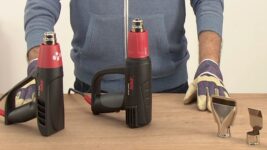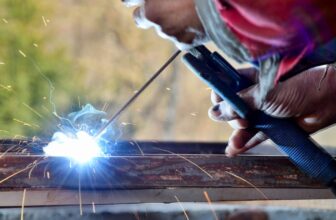
Methods for Safely Applying Heat, with a Heat Gun to the Compressor;
Understanding the Role of Heat in Compressor Performance
The compressor, being the “heart” of an HVAC system, plays a vital role in its operations. Without a properly functioning compressor, the HVAC system can’t work effectively. Applying heat helps to lubricate the compressor. By heating the compressor’s oil, it’s turned into a thin layer that helps protect and smoothen the compressor’s operations. This process not only can optimize the system performance but also prolong the system’s lifespan.
When performed correctly, the application of heat can serve as a game changer in HVAC maintenance. It’s about understanding these concepts and mastering the art of applying heat properly for a more efficient and long-lasting HVAC system.
Precautions to Take Before Applying Heat
Before you proceed with the heat application, there are a few safety measures to be noted. Firstly, always ensure you’re wearing appropriate safety gear such as quality gloves and eye protection. Heat guns can generate temperatures that exceed 1000°F, hence it’s vital you keep yourself safe.
Also, given the compressor’s potential vulnerability to extreme heat, it’s important to set the heat gun at the right temperature. Too much heat may cause irreversible damage to the compressor and other nearby components.
Remember, patience is key. It’s a slower process that requires thoroughness and precision. Quick, rushed actions could lead to more harm than good.

Applying Heat, with a Heat Gun to the Compressor;
When it comes to maintaining HVAC systems, knowing how to properly apply heat to the compressor plays a vital role. The following steps detail this process, offering an outline that professionals and DIY-enthusiasts alike can follow to optimize system performance.
Preparing the Work Area
Before one begins applying heat, it’s crucial to properly set up the work area. The compressor should be clear of any combustible materials or liquids that could ignite when exposed to heat. One should also ensure stable footing for maximum control over the heat gun.
Ensuring Safety Measures
Safety always comes first in any maintenance process. The person handling the heat gun should wear appropriate safety gear, such as heat-resistant gloves and safety glasses. They should not touch the hot nozzle of the gun, even with gloves on, to prevent possible burns.
Applying Heat to the Compressor
With all safety measures secured and the work area prepared, one can begin applying heat to the compressor. It’s important to evenly distribute the heat, starting with a low setting and gradually increasing as necessary. The heat helps to lubricate the compressor, easing its function and prolonging its lifespan.
Monitoring the Temperature
Along with careful application, monitoring the heat gun’s temperature is equally important. Too much heat may damage the compressor while insufficient heat may not properly lubricate the system. Therefore, it’s crucial to keep the heat gun at just the right temperature to ensure optimal working conditions for the compressor.
These guidelines provide a roadmap to safely and effectively applying heat to your HVAC system’s compressor. Familiarity with this process can greatly enhance your maintenance skills, boosting the performance and longevity of the HVAC system.
Applying heat to the compressor with a heat gun isn’t a task to take lightly. It’s crucial to follow the safety measures and steps outlined in this guide. Remember to wear your safety gear and set the heat gun at the right temperature. Prepare the work area diligently and ensure you’re distributing the heat evenly while keeping a close eye on the temperature. By adhering to these guidelines, you’re not only optimizing the performance of your HVAC system but also extending its lifespan. So, don your gloves, grab your heat gun, and get to work with the confidence that you’re doing it right.



















































































